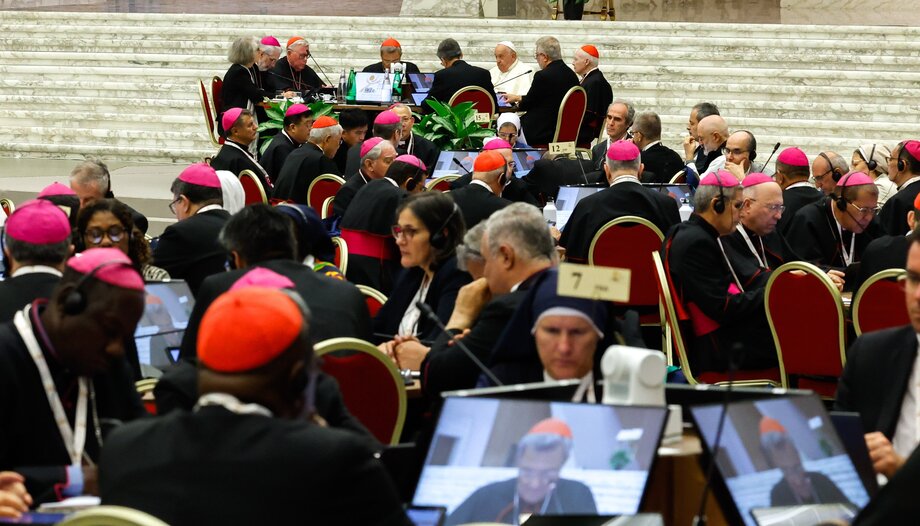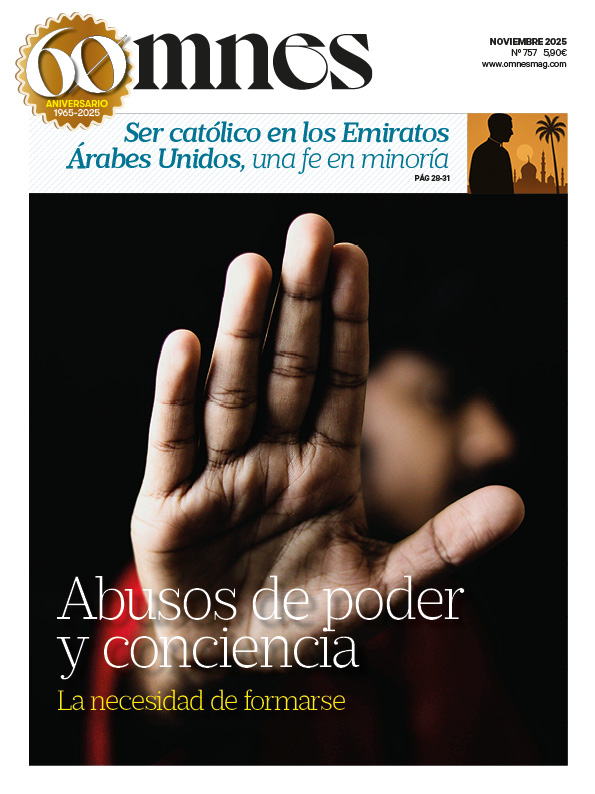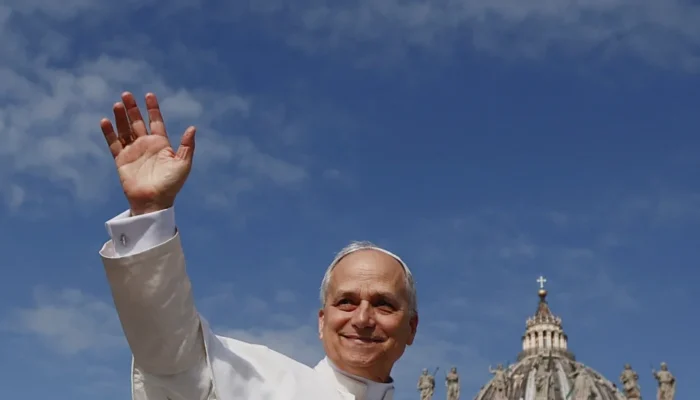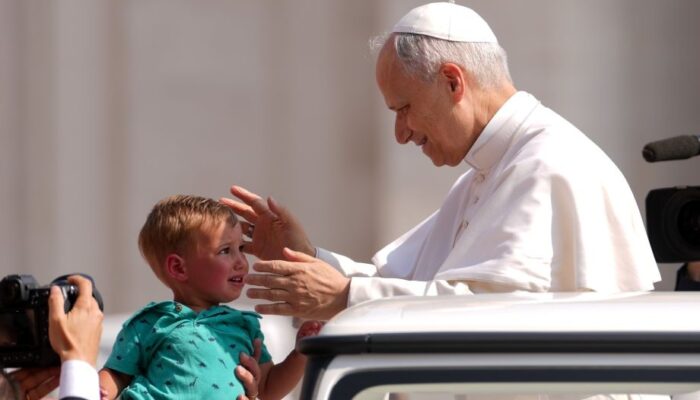The "Guidelines" have been prepared by the General Secretariat of the Synod, directed by Cardinal Mario Grech, are addressed to the entire People of God, and have been approved by Pope Leo XIV. The Document is part of the support service for the implementation phase of the Synod, and has a twofold purpose.
On the one hand, to offer the local Churches throughout the world a shared frame of reference to facilitate their journey together. In addition, they promote the dialogue that will lead to to the whole Church towards the Ecclesial Assembly of October 2028.
Addressed to all the People of God
One of the most relevant aspects of the Document is that the ".TracksThe "invitation is addressed "to all the People of God, who are the subject of the synodal journey and, in particular, to the Bishops and eparchs, to the members of the synodal teams and to all those who are involved in various ways in the implementation phase, in order to make them feel our support and to continue the dialogue that has characterized the entire synodal process".
In the first greeting of Leo XIV
The Letter of Cardinal Mario Grech recalls the first greeting of Leo XIV, pronounced on May 8, just elected Pope, from the central loggia of St. Peter's Basilica. We are "a missionary Church, a Church that builds bridges through dialogue, always open, like this square, to welcome with open arms all those who need our charity, our presence, dialogue and love" (Leo XIV).
"The intention is to ensure that we proceed with the unity of the Church at heart," adds Cardinal Mario Grech, "harmonizing reception in the various ecclesial contexts, without undermining the responsibility of each local Church. Mario Grech, 'harmonizing reception in the various ecclesial contexts,' without undermining the responsibility of each local Church. By placing itself 'in line with the indications of the Final DocumentThe objective is to concretize the perspective of the exchange of gifts among the Churches and in the whole Church (cf. FD, nn. 120-121).
Implementation phase clues
1. What does this phase consist of?
This is the last of the three phases of the Synod. It follows the phase of consultation and listening to the People of God (held between 2021-2023), and the celebratory phase, in which the two Sessions of the Synod took place. Synod Assembly of Bishops (October 2023 and October 2024).
The implementation phase was inaugurated by Pope Francis with the Accompanying Note of November 24, 2024, by which the Final Document (FD) was delivered to the whole Church.
In a unprecedented event in the history of the synodal institution, declares that the FD "participates in the ordinary Magisterium of the Successor of Peter (cf. EC 18 § 1; CCC 892)" and asks that it be received as such. Therefore, it is the FD, in its entirety, that is the point of reference for the implementation phase, points out the Document made public on July 7.
"The implementation phase aims at experimenting with renewed practices and structures, which will make the life of the Church ever more synodal, starting from the integral perspective outlined in the FD, in view of a more effective realization of the mission of evangelization."
2. Who participates in the implementation phase?
"The implementation phase is an ecclesial process in the full sense, involving all the Churches as subjects of the reception of the FD. And therefore, the whole People of God, women and men, in the variety of charisms, vocations and ministries with which it is enriched. And in the different articulations in which its life is concretely developed (small Christian communities or basic ecclesial communities, parishes, associations and movements, communities of consecrated men and women, etc.)".
Since synodality is a 'constitutive dimension of the Church' (FD, n. 28), it cannot be a path limited to a nucleus of "enthusiasts". On the contrary, "it is important that this new process contribute concretely 'to broadening the possibilities of participation and the exercise of the differentiated co-responsibility of all the baptized, men and women' (FD, n. 36), in a spirit of reciprocity".
3. How to use the Final Document in the implementation phase?
"The FD is the point of reference for the implementation phase: for this reason, it is cited here so abundantly," it is noted. "Consequently, it is essential to promote its knowledge, particularly on the part of the members of the synodal teams and of those who, at different levels, are called upon to animate the implementation process.
Above all, the reading of the FD must be sustained and nourished by prayer, both communitarian and personal, centered on Christ, master of listening and dialogue (cf. FD, n. 51) and open to the action of the Spirit. "The FD proposes, in fact, to the whole Church and to each baptized person, the perspective of a journey of conversion: 'the call to mission is, at the same time, the call to conversion of each local Church and of the whole Church'" (FD, n. 11).
Some specific areas
In this sense, and without prejudice to the responsibility of each local Church in the contextualized implementation of the FD, the document notes, "it is already now possible to foresee, in the light of the path taken at Synod 2021-2024, that the local Churches will be invited to share the steps taken in some specific areas, in the forms and modalities considered most opportune."
Nine of these areas are listed below, which can be consulted in the text now disclosedSection 3.2.
4. What method and instruments should be used in the implementation phase?
"The synodal method cannot be reduced to a set of techniques for managing meetings, but constitutes a spiritual and ecclesial experience that involves growing in a new way of being Church, rooted in the faith that the Spirit bestows his gifts on all the baptized, starting from the sensus fidei (cf. FD, n. 81)."
Stages of the synodal process
These are the stages of the synodal process, communicated on March 15, and reconfirmed.
- October 24-26, 2025Jubilee of the synodal teams and participatory bodies, the organization of which has been entrusted to the General Secretariat of the Synod.
- June 2025 - December 2026The implementation itineraries in the local Churches and their groupings;
- First half of 2027: Evaluation assemblies in the Dioceses and Eparchies;
- Second half of 2027Evaluation Assemblies in the national and international Episcopal Conferences, in the Eastern Hierarchical Structures and in other ecclesial groupings;
- First quarter of 2028Continental evaluation assemblies.
- October 2028Ecclesial Assembly at the Vatican.
Two more study groups
On the other hand, Pope Leo XIV established two new Study Groups at the Ordinary Council meeting in Rome a few days ago. He confirmed the Study Groups established by Pope Francis last year. He also added two newOne on 'The Liturgy in Synodal Perspective', and the other on 'The Status of Episcopal Conferences, Ecclesial Assemblies and Particular Councils'.








